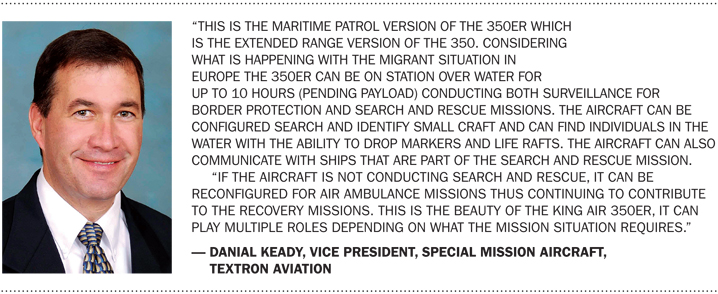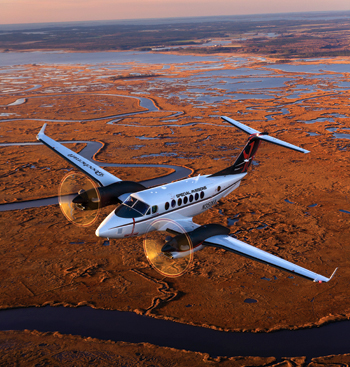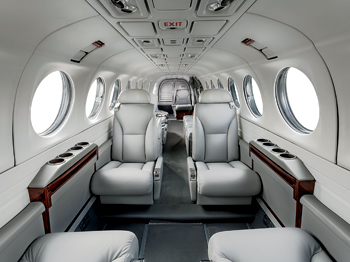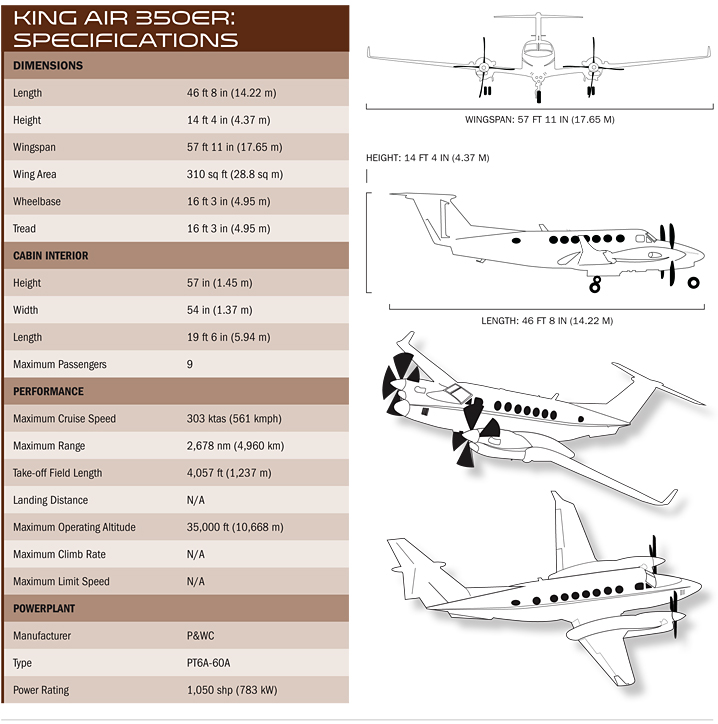INDIAN ARMED FORCES CHIEFS ON
OUR RELENTLESS AND FOCUSED PUBLISHING EFFORTS

SP Guide Publications puts forth a well compiled articulation of issues, pursuits and accomplishments of the Indian Army, over the years

I am confident that SP Guide Publications would continue to inform, inspire and influence.

My compliments to SP Guide Publications for informative and credible reportage on contemporary aerospace issues over the past six decades.
King Air 350ER: Small Is Big
It is an opportune moment for the Indian Coast Guard and agencies alike to consider induction for its aviation wing, of fixed-wing platforms that provide the best capabilities at low and affordable cost

India has a coastline of 7,517 km both on the western and eastern flanks of the mainland as well as the island territories of the Andaman and Nicobar Islands in the Bay of Bengal and the Lakshadweep in the Arabian Sea. As provided by the yardsticks of the United Nations Convention on the Law of the Sea (UNCLOS), the size of the Indian exclusive economic zone (EEZ) is estimated to be around 2.2 million sq km, contiguous with the territorial waters of the mainland as well as those of the island territories.


In peacetime, apart from surveillance of India’s EEZ for the protection of its natural resources and the preservation of its marine environment as stipulated by UNCLOS under rights and responsibilities, detection of existing, developing or potential threat to national security from the sea, has acquired even greater importance after the 26/11 episode. On this fateful day, terrorists sponsored by Pakistan, used the sea route to infiltrate into Mumbai, the commercial capital of the nation, and wreak havoc there. In fact, on December 31 last year, when the world was set to celebrate New Year’s eve, the Indian intelligence and maritime security agencies responded swiftly and with the help of its Dornier Do 228 maritime surveillance aircraft, located the suspect vessel and helped ships intercept and destroy the explosive laden craft. The Indian Coast Guard (ICG) was thus successful in thwarting a repeat of 26/11 in which the possible target was one of the coastal cities of Gujarat. Despite the successful response jointly by the intelligence agencies and the ICG as well as the capability displayed, coastal security continues to remain a major national security concern.
History of the Indian Coast Guard
Given the fact that the task of sanitising the large and widely dispersed EEZ was not only monumental but critical to national security as well, the need was felt as early as in the 1970s to create a dedicated organisation that could be assigned the responsibility of securing the EEZ. Based on the report by the Rustomji Committee for the Preservation and Protection of the EEZ, the ICG was established on February 1, 1997, with two small corvettes and five patrol boats that were transferred from the Indian Navy.
As the surveillance capability of land-based platforms and patrol vessels can be augmented and substantially enhanced through the employment of airborne platforms, the need was immediately felt to introduce aerial surveillance capability to the newly created ICG. The aviation wing of the ICG was thus established at Goa on May 22, 1982, with just two Chetak helicopters. The first fixed-wing squadron was raised on July 30, 1983, with two F-27 Fokker Friendship aircraft leased from the state-owned domestic carrier Indian Airlines. The first squadron equipped with Dornier Do 228 aircraft was commissioned at Daman in January 1987. Over the years since then, the ICG has grown considerably and today, it has 42 Coast Guard Stations, five Air Stations and 10 Coast Guard Air Enclaves. It operates 38 Dornier Do 228 maritime surveillance aircraft and 22 rotary-wing platforms. All its air assets are delivered by the Indian aerospace major the Hindustan Aeronautics Limited (HAL). While the rotary-wing platorms are a mix of licence-manufactured Chetak and the indigenous Dhruv advanced light helicopter, the fixed-wing fleet of Dornier Do 228 aircraft are of German origin that has been licencemanufactured by HAL since 1983. In view of the daunting challenges that lie ahead in the domain of Indian maritime security, the ICG will certainly need a more modern and capable fixed-wing platform. Coincidentally, as the aviation wing of the ICG is expected to embark on the next phase of modernisation in the near future, it would be an opportune moment to consider induction of fixed-wing platforms that provide the best capabilities at low and affordable cost. One good option would be the Beechcraft King Air 350ER that was showcased at the Air Show in Paris in 2007. Incidentally, Beechcraft was acquired by Textron in March last year.
The King Air 350ER offers unmat ched economy in operat ions over a wide range of milita ry and civilian special missions
Since 1864, more than 7,300 Beechcraft King Air turboprops have been delivered to customers around the world, making it the best-selling business turboprop family in the world. The worldwide fleet has surpassed 60 million flight hours in its over five decades of service with corporate and commercial aviation as well as with the military for special mission operations in more than 94 countries across the world. The missions these platforms have undertaken range from traditional passenger and cargo transport to electronic and imagery surveillance, air ambulance, airway calibration, photographic mapping, training and weather modification. More than half of the platforms delivered belong to the King Air 200 and 300 series.
The King Air 350ER – A Versatile Platform
The Beechcraft Super King Air 350 has been a special airplane since its inception with its high payload capability, large size cabin which measures nearly 20 feet x 5 feet and offers impressive fuel economy. But the new King Air 350ER (Extended Range) version is designed to operate a unique mission profile. A derivative of the successful Beechcraft King Air 350, the King Air 350ER has been produced by Beechcraft Augsburg, a subsidiary of Textron Aviation. This is a twin-engine, turboprop aircraft that incorporates advanced technologies and has a flexible multi-mission capability. The aircraft is capable of performing a range of special missions for the military and law enforcement agencies. It can be employed for a variety of roles such as intelligence gathering, reconnaissance, search and rescue, target acquisition, pollution monitoring, light transport, medical evacuation, flying training and any other type of mission that could fall under “special operations”.
The King Air 350ER aircraft powered by two Pratt & Whitney PT6A-60A engines each of which is rated at 1,050 horsepower, has a maximum cruise speed of 578 kmph and a maximum range of over 4,300 km. The operational range of the King Air 350ER has been enhanced through the installation of additional fuel tanks in the nacelle. Although with the increase in fuel capacity, the maximum take-off weight of the platform has gone up from 15,000 lb to 16,500 lb, the endurance of the aircraft has also increased and can now remain on station comfortably for more than 12 hours. The landing gear has also been redesigned to cater for the increase in weight. The aircraft displays high degree of operational flexibility as it is capable of cruising at 555 kmph at 35,000 feet and is also capable of loitering at low speed at low altitude, a feature ideally suited for an aircraft employed air patrol duties. The reliability of the King Air 350ER has been adequately proven in operations by several nations across the world. The experience gained confirms that this platform offers unmatched economy in operations over a wide range of military and civilian special missions.
When compared to other platforms designed for similar missions, the King Air 350ER is small – measuring less than 47 feet in length and with a wingspan of under 58 feet. However, it is packed with the latest avionics and sensors. The state-of-the-art cockpit of the King Air 350ER has an advanced Collins Pro Line 21 integrated avionics suite. The special mission aircraft are fitted with the L3 Wescam MX-15 electrooptic/infrared system, Lynx-2 lightweight, high-performance, multi-function synthetic aperture radar units developed by General Atomics Aeronautical Systems. The radar operates in both synthetic aperture radar (SAR) and ground moving target indicator (GMTI) modes and has a range of 80 km. It provides high-resolution search and rescue imagery in all weather conditions. The aircraft also carries the AN/AAR-47 missile warning system and AN/ALE-47 countermeasures dispensing system. The maritime patrol version is fitted with the Airborne Tactical Observation and Surveillance system developed by Selex.
The Future
It has been reported that Beechcraft is working on a plan to integrate anti-submarine warfare (ASW) capability to the already long list of attributes offered by its King Air 350ER in the special missions market. Integration of ASW concept will equip King Air 350ER a capability of combating mini-submarines used by drug smugglers and the military. The new ASW system contemplated would significantly enhance the capability spectrum of the King Air 350ER in the maritime role. This would also provide Beechcraft with further opportunities to build more capable Special Missions aircraft in the future.






